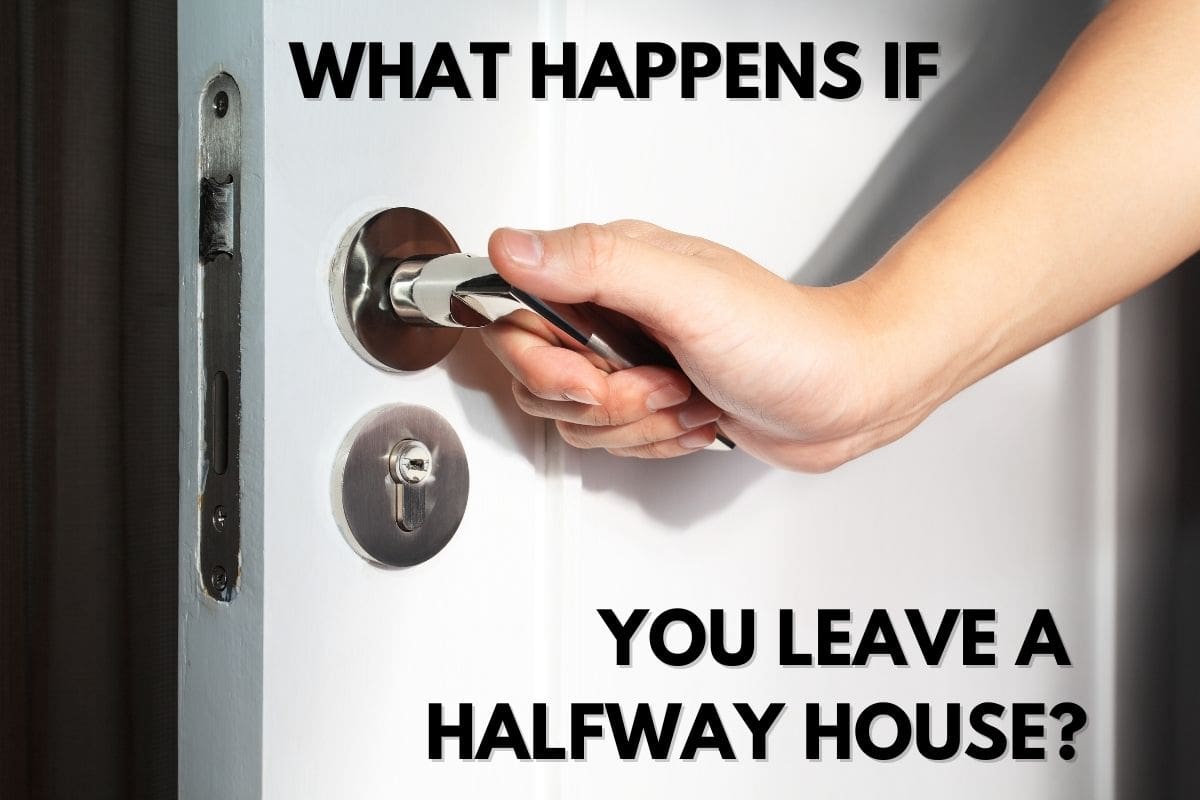Halfway houses are a type of transitional housing intended to put those who’ve been institutionalized on the straight and narrow. Some tenants reside at these homes voluntarily (usually alumni from an addiction recovery program), but most are court-mandated to be there. As such, these living communities are outfitted with high levels of surveillance and regulations similar to that of incarceration. Therefore, leaving a halfway house early can carry major consequences akin to breaking out of jail or violating probation. Read on to learn the circumstances in which you can (and can’t) leave a halfway house, and what happens if you do.
The Difference Between a Halfway House and Sober Living Home
Is leaving a halfway house always a big deal? It depends. “Halfway house” is often used as an umbrella term that can include sober living homes. However, they are actually a distinct type of housing situation and the two cannot be used interchangeably. This distinction is important to note when discussing the legality and potential punishments for leaving a halfway house because it applies to a specific population of individuals.
Both halfway homes and sober homes provide a structured environment with the intention of reintegrating incarcerated or recovering persons into mainstream society. As could be expected of such facilities, both carry a lot of rules. Curfew, drugs tests, mandatory group meetings, etc. Breaking these rules can result in expulsion from either type of residence, but only one of these housing arrangements can result in legal consequences.
As such, any references to a ‘halfway house’ in this article refer to the type of correctional housing used for inmates. However, it is worth noting that these offenders are often sentenced through drug courts or for other nonviolent crimes. Therefore, many halfway house residents are those who might also be eligible to be sent to a treatment program as opposed to serving a prison sentence.
What Happens If You Leave A Halfway House?
Attempting to leave a halfway house before residing there for the mandatory time frame will land you in hot water. The minimum time frame is three months, and the maximum being 12 months. Also known as a ‘walkaway’, violating this arrangement can be as serious as breaking out of prison or breaking parole.
In the eyes of the criminal justice system, this act is charged as “escape” and is considered a felony. The reason it is penalized so harshly is that mandated residency at a halfway house is considered part of a prisoner’s sentence. Federal statutes dictate that an escape charge can range from 2-5 years in imprisonment. In contradiction to these homes’ initial purpose, it’s quite common for residents (especially female ones) to serve a longer prison sentence for leaving a halfway house than their initial criminal conviction.
When Can You Leave A Halfway House?
Halfway house residents are typically only allowed to leave for two circumstances: work and sometimes for recreational purposes, albeit for a very limited period of time. The latter is considered a privilege that can be revoked for violating house rules.
There are legal ways to leave a halfway home, but what this looks like will depend on whether your residency is voluntary or not, and whether certain criteria are met. Sober living homes are considered voluntary even if your drug rehab program recommends or requires you to reside there during treatment. Should you choose to leave early, it is perfectly within your rights to do so and is merely considered leaving AMA, against medical advice.
However, there are also ways to legally leave a halfway home early as well. The following criteria can prove eligibility for parole or house arrest, allowing them to reside in a place of their choosing:
- Proof of available residency to immediately occupy with a working phone
- Whether there will be other adults living in that residence
- Proof of employment or future employment (recommended but not required)
- Proof of transportation to and from work
This decision is made by the halfway house manager. Bear in mind that you may still be required to pay the fee for the halfway house (25% of the prisoner’s gross income) for the remainder of your allotted stay requirement even if you no longer reside there.

































